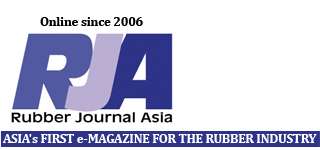In the next 10 years, the world demand for natural rubber is anticipated to grow by 3.7% and will create a huge marketing opportunities for the Philippine rubber industry.
11.3 million hectares of land around the world is planted with rubber trees beat up the average output of 10.2 million metric tonnes, according to the report of the Assistant Regional Director of the Department of Trade and Industry in Zamboanga, Sitti Amina M. Jain.
“We need to take advantage of the increasing global market demand for rubber,” Jain said.
In the present, 85% of the Philippines’ total rubber production is exported as field or cup lumps while the 15% left is processed as rubber crumbs.
“Ironically, while we are exporting the bulk of our natural rubber, a tire manufacturer — Yokohama Tire Philippines Inc. imports 94 percent of its natural rubber requirements from Thailand and Indonesia,” Jain said in her report.
She further explained that the rubber production of the country is very small as rubber farm owners only have three to 10 hectares of rubber plantation.
“A hectare of rubber plantation can yield an average of 5 metric tons of raw rubber called “cup lumps.” They are sold to traders or direct buyers and providing yearly earnings of P250,000 to the small farm owner,” she added.
According to her report, 75% of the natural rubber production of the world is used to manufacture rubber tyres while 17% is used to manufacturing rubber shoes, belts and other non-tyre industrial products while 12% is used for rubber gloves.
Jain, who also heads a rubber industry cluster manager under the National Industry Cluster Capacity Enhancement Project (NICCEP), said that Mindanao island is the leading producer of natural rubber in the country, representing 99% of the sector with a total area of 138,710 hectares created in 2010 that opened 277,420 jobs to many Filipinos. (PRA)

